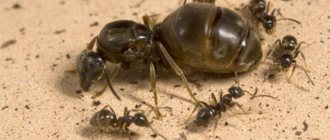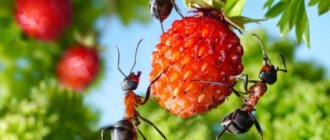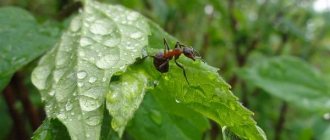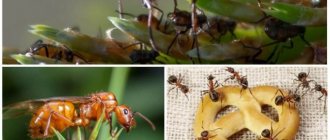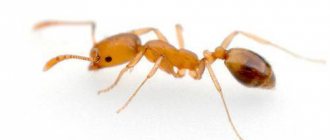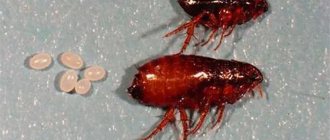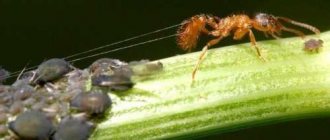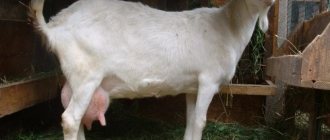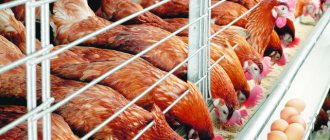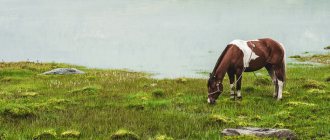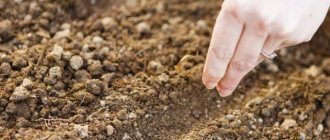How to catch a queen ant?
We are often asked, “I want to get ants, how can I catch the queen?” You can, of course, buy formicarium and ants at once, but often you want to test your strength, or get a specific species that is found in the nearest forest.
And that is exactly why we wrote this article. And before we begin, I want to immediately warn all novice world keepers:
DO NOT TAKE QUEENS FROM ANANT HILLS!
Your chances of finding a queen in a natural anthill are extremely small, but your actions will cause irreparable damage to the anthill. In addition, if you take the only queen from an anthill, you thereby doom the rest of the anthill to slow death.
Queens need to be caught after the mating flight - when they are looking for a place to found a future anthill. This is what usually happens: after mating, the queens land, break off their wings, and begin to look for a secluded place. When they find some kind of shelter, they begin to dig a small hole in which they will care for the first eggs, which they themselves will lay. Larvae hatch from the eggs, and the larvae, gradually growing, pupate and turn into a real ant. Our task is to “intercept” the queen while searching for a place for an anthill, and place her in our incubator.
Formicarium.
A formicarium is an artificial anthill made of plastic, acrylic and gypsum, with a system of passages and holes for moisture. In such farms, ants can live up to 20 years! This option is ideal for the most curious and observant, regardless of age. And also for those who are sure that they want to take care of insects. Ant life in such a formicarium is as close as possible to life in nature, the colony is constantly growing and developing, distributing food, cleaning, raising larvae and much more...
Such a farm needs to be looked after, but this option will not take you much time: periodically add food (you can buy it in our store), moisten the formicarium with water in special holes every two or three days, and sometimes clean out the husks and debris from the arena .
The ever-boiling life of an anthill will amaze you to the core, and you will definitely fall in love with your little ant friends!
And now to the most important thing. Advantages and disadvantages.
Creation of an incubator
The next stage of preparation is the manufacture of incubators. You need to learn how to prepare apartments for the queen ant. This is done quite simply, you need to take a test tube or syringe with a sealed spout, pour boiled water into it, about one third. After this, you need to make a ball of cotton wool and push it into the test tube so that it is almost completely immersed in water. Turn the incubator over and make sure there is no water leaking. If you did everything correctly, then the queen will be able to live in this incubator and give rise to a new colony.
This is what a regular ant incubator looks like
Preparatory stage
To make an ant farm with your own hands, you need to do a little preparation. First , we need to decide on the container in which we will place the restless family.
. An excellent ant farm can be obtained from a flat aquarium, but this requires additional costs. Craftsmen can make a container from plexiglass, fastening it with silicone glue. In this case, the design will be exactly the shape that suits you most.
The simplest version of an ant farm will be made from two containers for bulk products of different sizes. These can be jars or boxes made of transparent material without patterns or damage, one of which fits freely inside the other. Both jars must have tight lids. You will populate a colony of ants in the space between two banks
so that it is convenient to observe her life.
Soil or base for an anthill
The choice of filler for an ant farm depends on where you are going to get its inhabitants:
Be sure to take into account that the mixture of soil and sand should not only be well loosened, but also moistened
. However, do not overdo it; if you make the mixture too wet, the ants will simply drown in it.
Do not fill the container to the very top with the mud mixture. Leave a few centimeters of free space. And do not compact the mixture, but simply shake it lightly so that the inhabitants can easily make passages for themselves.
Flight table
Now you are ready to go queen hunting! But there is one problem - each type of ant flies only at a certain time of the year, some species fly twice a year. How can we understand when the species we are interested in will fly? For this we can use the flight table. It shows approximately what time a particular species flies. You need to understand that the table shows deadlines, and this does not mean that your species will fly at that particular time.
Massive flight of the leafcutter Acromyrmex versicolor
Search
We have chosen the species of ants that interests us (for example, let it be Serviformica cunicularia). According to the flight table, it turns out that this species most likely flies in mid-summer - the entire month of July is colored crimson in the table. But this is too long a period, isn't it? Absolutely right, since each year the timing of flight depends on many factors - for example, how soon the queen’s cocoons will mature, how soon there will be suitable conditions for departure, and so on. What should we do?
Firstly, if you know where the anthill of the species you want is located, you can observe it. A couple of days before the flight, single males and females will appear at the entrance, as if going out on reconnaissance. But if the nearest anthill is very far away, then you have no choice but to monitor the weather. Over the years of studying ants, some features have been revealed, for example, in our middle zone, ants almost always fly after heavy rain, or at high air humidity. From personal experience, queens can be found at the most inopportune times, and precisely when you are not expecting her. For example, standing at a bus stop, waiting for your bus. In such a case, it is worth carrying with you a small container in which you can carry the uterus home without damaging it.
Uterus is ready to fly
If you are sure that flight has begun, then you should purposefully look for the queens, who should run around in search of a suitable shelter for the base of the anthill. It is best to walk on wide, light-paved roads close to the area from which the queens might fly - for example, a running queen is very visible on sandy country roads. The principle is clear - you need to cross as much distance as possible, scanning the ground in places where the queen might run after shedding her wings.
Capture
Let's say you're lucky and you see a queen crawling on the ground. If she has not shed her wings yet, it is better to leave her alone, she may not be fertilized yet. We only need queens that have already shed their wings - they will definitely be somewhere nearby. If you see one, then you can put it in the incubator.
Never grab the uterus with your hands! You can easily damage its legs or abdomen. She needs to be driven into the incubator, you can use improvised objects - adjust and guide the queen with a blade of grass, or a thin twig, or a piece of paper. The main thing is not to damage! If you don’t have an incubator with you, you can use another container to bring the queen home, but you don’t need to drag it, but move her to the incubator as quickly as possible. After that, try to identify the species. If it is a social parasite, release it; if the queen establishes a colony on her own, remove the incubator to a dark, quiet place and do not disturb it. Check back carefully in a couple of days - most likely she will already have a clutch of eggs. Now all that remains is to wait - it is advisable not to touch the queen at all for several weeks, every time you look in may result in the brood being eaten, and you will have to wait from the beginning.
Uterus Serviformica cunicilaria in vitro
Distinctive features of the female
The queen ant is very easy to distinguish from an ordinary ant; it looks distinctive. Firstly, the queen of red ants is significantly larger than a typical representative of this species. Secondly, the body structure itself is slightly different. The color of the queen of house ants is slightly different, dark brown; there are also red types of garden ants, or varieties of black ants. The queen of a house ant has a large thoracic region; the queen, which has not yet formed a colony, has wings, but she cannot fly.
After the queen finds a place and forms her colony, she feeds on these wings, this is how she receives nutrients, it is thanks to them that she survives and continues the development of the colony. Then she eats what another class of ants brings, which is responsible for maintaining the queen; this is what their hierarchy looks like.
The beginning of a new colony
Great, 4-6 weeks have passed, you already have your first workers. Congratulations! Enjoy the pale goosebumps, which will darken and get stronger in a couple of days, and get ready to feed the colony! You almost certainly have a normal omnivore species - which means the colony needs to be fed with both syrup and protein food. Syrup can be made from sugar or honey - be careful with the latter, take only from trusted beekeepers, otherwise you may get poisoning of the colony. Fill with clean water and mix, the proportion is from 1:3 to 1:10, here you can experiment. Do not prepare a lot at once - the syrup is suitable for feeding for the first day, then it needs to be prepared again to avoid poisoning. Feeding with syrup should be done every 2-3 days. Make sure that the ants drink all the syrup; if there is anything left, remove the remains using a piece of cotton wool on tweezers or a toothpick.
Notes
- Dlussky G. M.
Ants of the genus Formica / Ed. K. V. Arnoldi. - M.: Nauka, 1967. - 236 p. — 2300 copies. - Peeters C., B. Hölldobler.
Reproductive cooperation between queens and their mated workers: The complex life history of an ant with a valuable nest // Proceedings of the National Academy of Sciences. - 1995. - T. 92. - P. 10977–10979. - ↑ 12345
Life of animals. Arthropods: trilobites, chelicerates, trachea-breathers. Onychophora / Ed. Gilyarova M. S., Pravdina F. N. - 2nd, revised. - M.: Education, 1984. - T. 3. - 463 p. - Orphan army ants adopted (The queens of African Dorylus army ants measure 5 centimeters)
- Heinze, Jürgen (1995). “Ant reproductive strategies” (PDF). Res. Popul. Ecol. 37
(2): 135–149. DOI:10.1007/BF02515814. - Himler, Anna G. (2009). "No sex in fungus-farming ants or their crops." Proc. R. Soc. B 276
(1667): 2611. DOI:10.1098/rspb.2009.0313. PMID 19369264. - V. Ya. Stanek.
Illustrated encyclopedia of insects. - Prague: Artia, 1977. - P. 262. - 560 p. - Franks NR, Resh VH, Cardé RT (eds).
Encyclopedia of Insects. - San Diego, 2003. - P. 29-32. — ISBN 0125869908. - Keller L.
Queen lifespan and colony characteristics in ants and termites (English) // Insectes Sociaux: Journal. - 1998. - Vol. 45. - P. 235-246. — DOI:10.1007/s000400050084. - Hölldobler, Wilson, 1990, pp. 143-179.
How to catch a queen ant for your farm
What is flight?
Flight is the time of formation of new families, when winged males and females leave their nests. Mating occurs once in a lifetime, the stock of the resulting genetic material is consumed gradually - the queen ant lays eggs for 12-20 years. After mating, the male dies, and the future queen sheds her wings and looks for a place for the first clutch. It's time to catch one for your ant farm. Be careful - individuals with wings have not yet been fertilized and will not produce offspring, therefore they are not of interest for a home formicarium.
Around the world, flight occurs from early spring to late autumn, depending on the type of ant. The first to begin “mating games” in March are the red-breasted harvester ants, from the genus Messor denticulatus. In April they are joined by carpenter ants Camponotus and steppe harvester ants Messor structor. Leaf cutters Atta and Tapinoma erraticum – in May. In June and July, Serviformica, Tetramorium, Lasius, Raptiformica sanguinea, Polyergus rufescens take off. Myrmica, Formica lemani, Solenopsis - in September. Detailed information about flight periods is reflected in special tables.
How to distinguish a queen ant?
The queen ant differs from the worker ants in its larger size and the shape of its back. The back muscles are well developed because they are used during flight. The female is also identified by her large rounded abdomen. These signs are characteristic of most ants living in our latitudes. Exceptions concern mainly exotic species.
How to catch a queen ant?
It is easier to find the future queen in open areas. To catch the queen ant, prepare a test tube. Plastic is more practical in camping conditions - it will not break if accidentally dropped. To create favorable humidity, place a ball of wet cotton wool inside. If the meeting occurred suddenly and a special container was not at hand, an empty jar or matchbox will temporarily replace the test tube. Instead of cotton wool, use damp moss or a fresh leaf.
The climax is the queen ant in front of you. Act decisively and carefully. Place the test tube on the ground not far from it. Carefully guide the female into the container using a blade of grass or a piece of paper. Try not to pick up the insect with your hands to avoid harm. After completing the mission, securely close the temporary shelter and carefully deliver it home.
How to grow a colony for a home formicarium?
A captured queen will lay eggs and give birth only under favorable conditions. To do this, take a test tube and fill it about ⅓ with boiled water. Then place a thick piece of cotton wool into the test tube so that it touches the water. Now the liquid does not leak out, but supplies the incubator with moisture. Place the queen ant in the prepared chamber. Cover the entrance with dry, loose cotton wool and place it in a quiet, dark place, for example, in a closet.
It is extremely important not to disturb the queen ant during this period - otherwise she may eat the brood. If this happens, be patient and wait for the next clutch, but before doing so, feed the queen a species-appropriate treat. Check the insect's condition every three to four days. There is no need to ventilate the incubator - dry cotton wool allows enough air to pass through.
If the living conditions in the test tube worsen - water begins to leak, or vice versa, the moisture in the test tube runs out, you will have to organize relocation. To do this, prepare a new test tube and connect it to the old one. Darken the new incubator by placing it under a thick cloth, and leave the old one in the light. The queen ant herself will move to a favorable environment and transfer the larvae there.
Harvester ants and other species develop from egg and larvae to worker in 4-6 weeks. The queen eats little or not at all during this period. It uses internal resources and feeds the larvae with gland secretions. The first offspring is not large in size. As soon as the working individuals appear, start feeding the young family.
What to feed the queen ant and offspring?
The diet of pets depends on the type of ants being raised. Harvester ants like poppy seeds and seeds; sweets are contraindicated for them. Other species prefer sugar syrup made from cane sugar and drinking water. There are gourmets who are served freshly prepared syrup from honey and water every 2-3 days.
Don't forget about protein foods. Once every 3-4 days, give the ants food insects, boiled chicken meat, egg whites or boiled chicken liver.
Catching a queen ant is a real adventure. Even experienced myrmikeepers can spend more than one day searching for a suitable specimen. And the difficulties do not end there - the thorny path of caring for a home colony is full of surprises and surprises. So be patient, embrace the unknown, and be considerate of your pets.
Feeding
The gel ant farm (reviews confirm this) does not require additional food supply. Otherwise, the insects will simply stop working. In other configurations, it is recommended to provide the colony with proteins for larvae and carbohydrates aimed at feeding adults. For this purpose, crickets and other similar types of food insects are purchased. You can add egg whites, boiled meat, and shrimp as food. It is better not to feed the population with street species, as they can be contaminated with pesticides.
Regular sugar or syrups based on it are suitable as carbohydrates. Fresh fruits, marmalade, marshmallows and other sweets are added to the diet. Some types of ants require special seed food. There will be no problems purchasing it; one pack is enough for a whole year (this means analog food for parrots or canaries). Food should always be fresh and in the required quantity. The inhabitants of the formicarium will figure out for themselves what and how much to eat.
How to catch a queen ant
There is a wonderful time for which both ants and myrmekeepers are equally zealously preparing. This flight is the period when winged individuals leave their native anthill to mate and give rise to new colonies. It is then that you need to look for the departed queens, which have shed their wings and are looking for shelter, because every ant lover knows that one of the best such shelters is his personal formicarium. How to prepare for this important moment, what to take with you and when to expect it? We'll find out now.
- Preparation . Ants prepare for flight all year long, accumulating food reserves and feeding larvae (especially queen ones). Still would! Her future fate depends on how well-fed the queen is - whether she can raise helpers for herself or not. The myrmekeeper must also eat well during this period - after all, he has to walk, perhaps several kilometers, before he finally meets the desired object of his hunt. However, meeting it is only half the battle; you need to catch it and put it somewhere where the queen can survive the journey home. What should be in your worldkeeper backpack? Of course, test tubes.
The role of the queen in the anthill
The queen does not work like other ants, does not protect the colony, does not look for building materials or food, she has a more important role - laying eggs. From them new individuals then appear, which take the place of ordinary workers. The queen is a special female in an anthill who has the ability to lay eggs. There are other females in the colony, but they do not give birth to “offspring”, but perform the same functions as other members of the community.
All ants serve the anthill and their queen, without whom they will die
The queen is the center of the universe for ants. Experience has shown that a colony will die in a matter of weeks if something happens to their queen. Knowing this, you can get rid of annoying “neighbors” in the house.
If the colony is very large (mainly in natural conditions), then there may be several queens. This is called polygyny. Queens lay eggs, they are given the same “care”, there is no preference for one queen over another. Therefore, if you decide to destroy an anthill, depriving it of its queen, but for some reason the colony remains in the same place, this means that there are several queens there.
In large ant colonies there may be several queens
Can an “ordinary” ant become a queen?
Primitive ant species do not have a queen, but have several females that can lay eggs. They act as a queen, but live as long as their counterparts. This means that the duration of the genus of this particular colony directly depends on the short life of the females: if all the egg-laying ants disappear, the anthill will be doomed to death.
A simple worker ant cannot become a queen
The queen lives 100 times longer than an ordinary ant (on average up to 15 years) and produces offspring of the colony for many years.
An ordinary ant cannot become a queen, it can only temporarily perform her functions, but a colony without a queen is obviously doomed to extinction.
Is the queen really the boss in the anthill?
The queen lives in the very depths of the anthill, so other living creatures, as a rule, cannot reach her, and some natural “disasters” (something fell from above, a strong wind blew and the ant was carried away, etc.) it is practically not affected. Throughout her entire life (and this is up to two decades), she does nothing but give birth to offspring. 90 or more generations may take place, and the queen will be alone and will lay eggs just as efficiently as in the first time after fertilization. Therefore, of course, the ant queen is the most important, significant unit of the entire ant kingdom.
Flood and fire are those natural disasters that can really destroy the queen ant
What does a queen ant look like?
It is very simple to distinguish the queen ant from simple “hard workers”: it is larger in size, thicker, so to speak. The queen has a large abdomen, on which the oviparous organ is located (in house ants, the abdomen measures 3–4 mm). The queen also has massive breasts that are no smaller than her head. This is explained by the fact that initially, before the breeding season, the female had wings, so the muscles in this area are large and strong.
The queen ant is always larger than the “ordinary” ants
The queen is less mobile and agile than an ordinary ant, since she only gives birth to offspring.
Appearance Features
The size of the uterus is significantly larger compared to ordinary individuals, and its length is approximately 4–5 mm. You can recognize it by the following signs:
- The insect is dark brown in color, and the back of the abdomen is marked with thin red bands.
- In general, the queen ant is completely different from the adult working insect. Its abdomen is very large in relation to the whole body.
- She is quite massive and leads a sedentary lifestyle.
- A significant difference between the queen and an ordinary ant is its rather large breasts.
The queen, who was already the founder of the colony, has no wings. But young females living in the anthill and ready for fertilization have wings. In general, they are not much different from males, and in principle they do not need wings - pharaoh ants cannot fly.
The life of a queen from birth to the founding of her colony
There are always a lot of both males and females in colonies, but not all “females” are capable of fertilization. Those of them that can produce offspring mate with the opposite sex in the summer, after which they either return to the mother colony (if they are red ants) or go in search of a good place to found their settlement. They move not so far from their place of birth and subsequently “keep in touch” with their first anthill.
If an ant was born female, this does not mean that it will live long and is a queen
The future queen is looking for a place for her kingdom using her wings. After she has decided on the location, the female lays the first eggs and sheds her wings or chews them off. The queen does not look for food for her offspring, but feeds them either with eggs specially laid for this purpose, or with fat reserves and deteriorating wing muscles.
Ant queens mate only once in their lives, after which the female spends the resulting supply of sperm throughout the remaining years.
The uterus itself controls how many and what kind of individuals it “gives birth to”
It is quite difficult to say in advance whether a female is a queen, because this is determined not only by her ability to reproduce, but also by her life expectancy. If she lives longer than an ordinary ant, then she is a queen, if not, then she was not one.
The queen rarely eats herself: there are special “court” ants that pre-chew food and then give it to the queen. Such food is easier and faster to digest, which is exactly what is needed for the one on which the well-being of the entire colony depends. It feeds mainly on protein foods.
Parasitism on other colonies
All ants, with the exception of one species, either create their own colonies in a new place, or live with their “mother”. Only Formicoxenus Nitidulus climb into someone else's anthill and live there happily. Of course, the “guards” “grab” them, but that’s where the matter ends. Scientists suggest that Formicoxenus Nitidulus secrete a secret that repels other ants. The queen of such parasites can quite easily settle in any other anthill and create her offspring there.
Formicoxenus Nitidulus parasitize on foreign colonies
Video: Queen ant lays eggs
What happens if the uterus dies
As practice shows, it is impossible to say for sure what will happen if the uterus is destroyed. If she had brood when you caught her, then there is a high probability that the colony will soon die. If she recently laid eggs, then there is a possibility that among the new individuals there will be either a female or a full-fledged uterus, which will continue to produce offspring.
If you leave only the queen alive, she will revive the anthill, and if you kill only the queen, then there is a high probability that the colony will die
The lifespan of an ant depends on what species it belongs to. If we are talking about domestic (pharaoh) insects, then the male lives only 20 days, and the working individual lives 60 days. Therefore, if the queen did not leave new offspring, then the ants will die in less than 2 months.
If the queen dies in the incubator
Ants must be properly cared for; they should not be released into the formicarium ahead of time. The smaller the colony and the larger the space for it, the higher the likelihood that the ants will spread garbage throughout the incubator, which will cause mold and other “joys” to appear that will destroy the community and the queen as well. If you followed all the rules for breeding ants, but the queen still died, you must either wait to see if she left another female in her place, but in this case the colony may disappear, or acquire a new queen.
Ants should be bred very carefully and carefully, otherwise it is easy to destroy the entire colony
Personal experience says that the queen must be of the same species as the entire colony, otherwise the ants will not accept her and will kill her.
Formicarium is an acrylic farm with a passage system.
Pros:
- The long lifespan of a colony is up to 20 years.
- Since colonies with queens live in formicaria, the number of ants is constantly growing.
- An excellent opportunity to study the ant world: nutrition, reproduction, work.
- Keeps you entertained for long hours.
- Makes you fall in love at first sight.
Minuses:
- As a rule, acrylic formicariums are more expensive than gel farms.
- It takes a little more time to care for the ants.
- You need to buy food, or look for some of your supplies: seeds, cereals, and so on.
- The colony is constantly growing, which means that in a few years it will be necessary to purchase new modules for subsequent development and growth.
Where to find a queen to get rid of house ants
House ant nests are usually located in secret places. First you need to determine where the insects come from. To do this, you can monitor the movement of worker ants. However, it also happens that there is a network of diffuse nests located in different places, between which communication is maintained, and the uterus can be located in any of them. In this case, there is very little chance of finding the queen ant.
The queen lives very deep in the anthill so that no enemies can reach her. And it is almost impossible to lure her out. You can try to arrange some kind of small apocalypse so that the insects' instinct of self-preservation will work (for example, blow on an ant's nest with a hairdryer or fan). However, in the flow of ants it will be difficult to pull out the uterus. Therefore, it is necessary to search in the colony itself and pull the queen out of there. In exactly the same way, you need to get the queen of ants in natural conditions (in nature). It is quite easy to destroy it - insects do not survive in boiling water or under heavy loads.
Using aerosols it is easy to treat vertical or inclined surfaces where ants hide
As practice shows, catching and immediately destroying the queen is not always effective, since most often she is caught after she has laid eggs. To kill both the queen and the offspring, it is necessary to place products mixed with a slow-acting poison in the “visibility zone” of insects. It will accumulate in the body of the uterus for a long time, and as a result will destroy both it and the eggs. You should not rely only on folk remedies; special gels, aerosols and traps against ants are effective.
